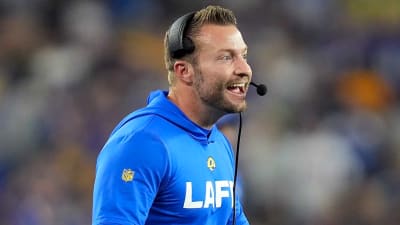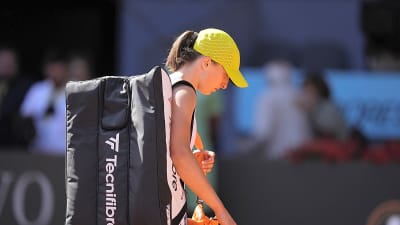
Another trade deadline has passed, and the Tampa Bay Lightning were buyers once again. They made one move, but arguably, this is a move that they made count.
Now that the deadline is over, it’s time to whip out the red pen and start grading. Here is a grading of the Tampa Bay Lightning’s trade deadline. A recap of the deadline plus an evaluation will be given before a final grade is levied at the end.
Breaking Down the Move
Before we get into the evaluation, let’s make sure everyone is up to speed with all aspects of the deadline moves. The Lightning made one move, but there was a lot to it.
As part of a three-team trade with the Seattle Kraken and the Detroit Red Wings, the Lightning acquired former forward Yanni Gourde, forward Oliver Bjorkstrand and a 2026 fifth-round pick. As part of the trade, the Lightning sent the following to Seattle: forward Michael Eyssimont, a first-round draft pick in 2026, a first-round draft pick in 2027 (both top-10 protected) and the Toronto Maple Leafs’ second-round draft pick in 2025 (previously acquired from the Utah Hockey Club).
In a potentially overlooked part of the deal, the Lightning also acquired unsigned defenseman Kyle Aucoin. He was a sixth-round draft pick by the Red Wings back in 2020. The 22-year-old defenseman is currently playing for Harvard (yes, that Harvard) in the NCAA. So along with ready-now players, they also added some depth to the defense.
The Kraken retained 50% of Gourde’s salary, while the Red Wings took on 25%. Former Lightning general manager Steve Yzerman was cool with paying one of his former players’ salaries. The Red Wings acquired the highest selection between the Lightning’s fourth-round picks in the 2025 NHL Draft. They acquired an extra 2025 fourth-round pick from the Edmonton Oilers back in May through a deal with the Anaheim Ducks.
Now that the trade has been recapped, and everyone is on the same page, we can evaluate.
The Lightning Accomplish Their Overall Goal
While the move was a bit pricey, the Lightning were in need of further scoring depth, and they got it. When healthy, both of these acquisitions are effective additions. Gourde has scored 20 or more goals three times. Bjorkstrand has done so four times and is coming off a career-best 59 points in a season. He’s on pace for another 50-point campaign.
Gourde has struggled with health this season, only playing 38 games so far. He had just 17 points in 36 games before getting injured. However, in the 20 games leading up to his injury, he had 13 of those points. He was playing at a higher level than he did out of the gate. That’s a 53-point pace in those 20 games, compared to a 16-point pace in his first 15 games of the season. So far, he’s continued to produce in the two games since he was injured with a point in each game, including his first with the Lightning post-trade.
So far, so good.
To make this a fair assessment, two biases need to be acknowledged.
One is that Gourde and Bjorkstrand played a game for them ahead of the deadline. Seeing them already produce for the team can’t be removed from the analysis. It already happened. It’s only one game, but it was a game that has already made this move look good. They both helped complete a comeback win over the Buffalo Sabres. Unlike other trades that happened the day of the deadline, this one has that added benefit.
The other bias is how it compares to an egregious trade made by the Lightning two deadlines ago when they acquired Tanner Jeannot. Whether it’s fair or not, every trade Lightning general manager Julien BriseBois makes will be compared to when he flipped Cal Foote and five draft picks to the Nashville Predators in exchange for an enforcer. That feeling of “it was better than that” infects every move. This might have been panned in an alternate timeline. We’ll never know. However, a transparent evaluation needs to acknowledge that this trade looks good in part due to that subconscious comparison.
However, even without the Jeannot comparison, you can also look to Brandon Hagel‘s acquisition. That took two first-round picks, Taylor Raddysh and Boris Katchouk – and the Lightning got two fourth-rounders with Hagel. At the time, it was viewed as a contender prioritizing the Stanley Cup window over the future. This move can be viewed in the same light. Worry about draft picks later. There are championships to win.
Better yet, they are only paying 25% of Gourde’s salary. That’s some solid maneuvering, given this team’s chronic cap issues. Bjorkstrand is also going to be available for a second playoff run next season. They managed to make this trade more than a rental.
Giving Kyle Aucoin a Look
This could be the only time we talk about this defenseman. But this addition stands out a bit more just because of the team that made the move to get him. This team loves players who were drafted in the later rounds or went undrafted. What looks like a throw-in to complete a three-way deal could be relevant down the line.
At first glance, not so much. He’s 22 years old and isn’t even signed to a professional contract yet. Just keep this in mind. Gourde is now worthy of having been 1) taken in the expansion draft and 2) acquired in a blockbuster move. At one point, he was undrafted and didn’t make his NHL debut until he was 24 years old. He wasn’t an everyday player until he was 26. Don’t rule this aspect of the trade out as nothing.
The Lightning did their job. They got the scoring depth they needed, all while adding depth and having other teams retain or take on the salary of an acquired player. Objectively, it’s an overpayment, but the proven talent and perhaps some potential talent give this move strong favorability.
Grade: B+
More must-reads:
- Marc-Andre Fleury joining Canada for World Championship
- Kings, GM Rob Blake mutually part ways
- The 'NBA all-time assist leaders' quiz
Breaking News
Trending News
Customize Your Newsletter
 +
+
Get the latest news and rumors, customized to your favorite sports and teams. Emailed daily. Always free!








